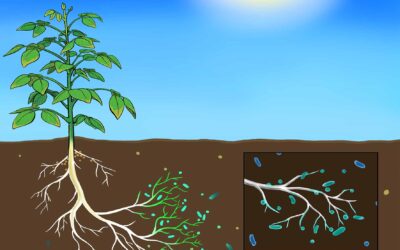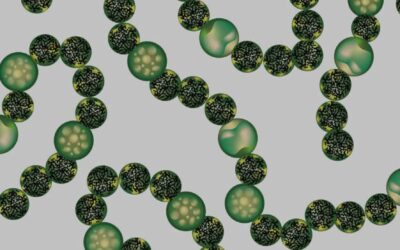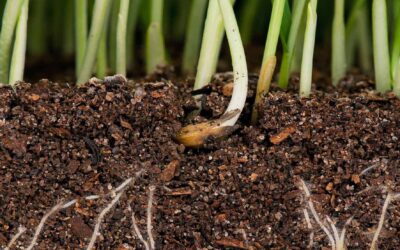Technology
The technology behind Sequester involves the use of microbes to restore the natural ecological balance of soil, thereby increasing the nutrient content in the crops that we consume and sequestering carbon and nitrogen from the atmosphere.
Cyanobacteria to the Rescue
Diverse aerobic microbes, bacteria, fungi, protozoa, and nematodes, all work to improve soil health over time. Cyanobacteria work with these diverse organisms to increase soil health, ecological balance and speed the process of soil reclamation.
Rapidly Restoring Soils
Cyanobacteria are nitrogen-fixing, photosynthetic autotrophs that rapidly restore carbon and nutrient cycling. When applied in the correct concentrations, the water and nitrogen savings more than offset the application cost.
Nature’s Construction Crew
Cyanobacteria are nature’s construction crew. They breakdown bedrock into sand, silt and clay while accelerating the formation of organic matter which together make topsoil. In depleted soils, this also results in greater formation of soil aggregates to increase aeration, and retain moisture and nutrients in the crops root zone.
Credited by NASA
NASA credits Cyanobacteria for establishing our oxygen rich environment 3 billion years ago. Now they are looking to Cyanobacteria to establish a similar environment on Mars. Sequester® drives the reclamation process to improve soil health, soil aeration and restore carbon and nutrient cycling.
Carbon Cycling
Plant Photosynthesis consumes CO2 from the atmosphere, releases oxygen, and creates carbon-rich plant sugars which feed the plant and are released as exudates into the soil. These plant exudates attract microbial interactions that return needed nutrients and minerals taken up by the plant. Consumption of the plant sugars by microbes creates humic polymers and soil aggregates which are stable forms of carbon that remain in the soil for extensive periods of time , as long as other physical agronomic practices don’t disturb the newly established soil structure.
Nutrient Cycling
Cyanobacteria are autotrophic nitrogen fixing microbes, which means they have a unique ability among microbes to fix atmospheric nitrogen into forms beneficial to crops – and provide the energy themselves to run this process.

Sequester® in CO2 Sequestration and Climate Change Mitigation
Carbon dioxide is one of several GHG’s (green house gases) primarily responsible for global warming and the world is on a fast track to mitigate these effects. Cyanobacteria (active ingredient in Sequester®) is receiving increased interest in alleviating the influence...
Nitrogen Fixation with Sequester®
Sequester® is formulated with nitrogen-fixing autotrophs (microbes that are able to provide their own energy through photosynthesis) called Cyanobacteria. They are powered by the sun. They work by taking nitrogen from the air and converting it to a bioavailable form...
Bioremediation with Sequester®
Creating a safe environment.The Cyanobacteria strains delivered in Sequester® have the functional ability to perform a remarkable number of functions: fix atmospheric nitrogen; decompose organic wastes and residues; detoxify heavy metals, crude oil and gasoline,...
Sequester® in Lawn and Landscape, A Regenerative Program
Residential Lawn & Landscapes are facing severe pressures from changes in climatic conditions. Fertilizer prices have skyrocketed and water use limitations are becoming common. Homeowner’s have significant challenges in maintaining a climate smart and...
Regenerative Agriculture and Solutions to the Problems Caused by Depleted Soil
Most soil used in agriculture today is lacking in carbon and therefore not considered healthy. In fact, according to the Regenerative Agricultural Association of Southern Africa, (RegenAg SA), 50-75% of organic matter has been lost to industrial agricultural practices...
Microbial Soil Reclamation with Sequester for Agriculture
Practically all soils are depleted, meaning the ability to cycle carbon and nutrients, and hold water has been lost or significantly reduced. This is also described as a loss in soil health because soils are literally alive. A typical gram of soil contains 1 billion...





